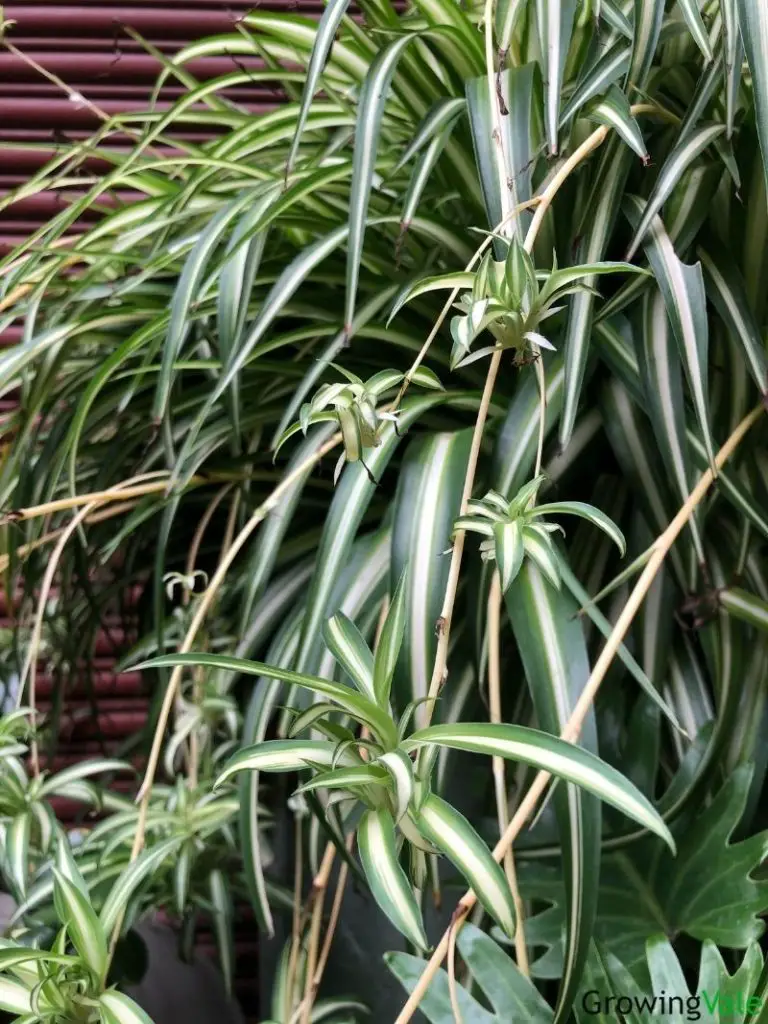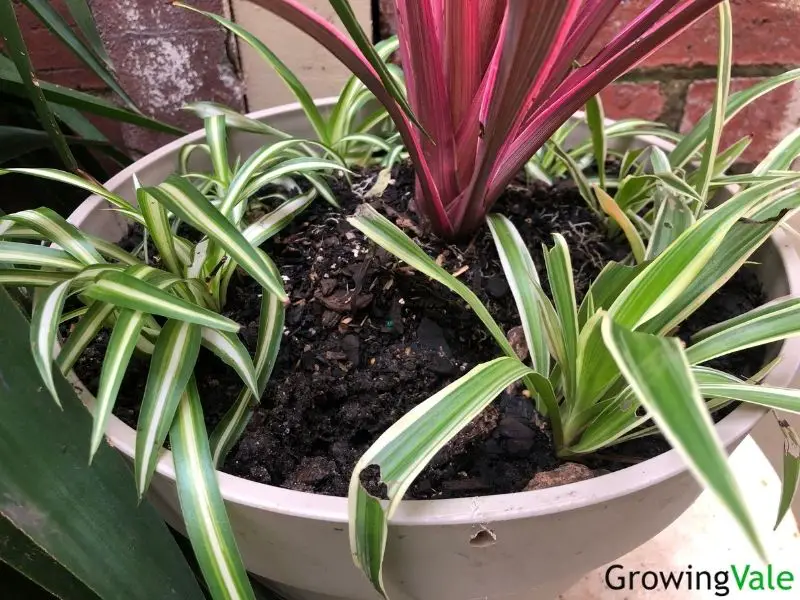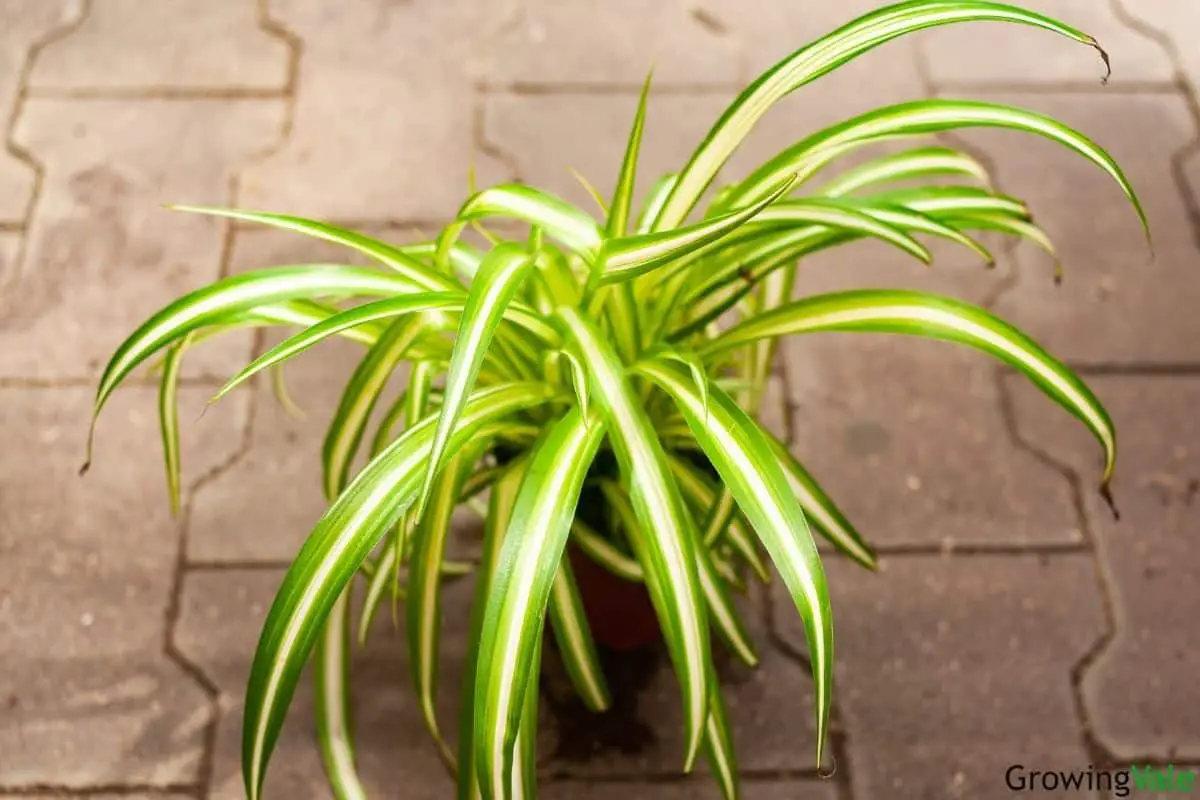Every once in a while spider ivy needs to be repotted and transplanted. Once your plant has outgrown its container, it’s time to size up! This will allow the plant to continue growing healthily and quickly.
If you’ve never moved your spider plant before or you’re not sure where to start, this guide will help you easily repot your plant. Here is everything you need to know about repotting and transplanting Chlorophytum comosum!
Even though spider plants thoroughly enjoy living in slightly root-bound pots, they do eventually need to be repotted and transplanted. If your plant is in a pot that is too constricted for its roots, it will have a very hard time developing into a mature plant.

Thankfully, repotting airplane plants is easy and will encourage your plant to continue growing quickly.
When to Repot A Spider Plant
If your spider plant is developing at a normal and healthy speed, it needs to be repotted once every one to two years. When the roots begin to grow above the soil or out of the drainage holes, it’s time to move it.
Another clear indication that your plant needs to be repotted is cracking along its container. This is a common issue with fast-growing plants especially when they live in ceramic pots.
You may also need to repot your plant if its roots have been damaged. Issues such as root rot, disease, and infestations can cause your plant to stop growing and eventually die. Often planting your Chlorophytum comosum in fresh soil can fix these problems!

How to Repot A Spider Plant
Repotting your spider plant can be done relatively quickly and easily. As long as you have the right materials, it shouldn’t take too much time or effort.
Step One
First things first, you’ll need to get a new pot that is about one to two inches larger than your plant’s current one. Preferably, this pot should be made out of terracotta and needs to have at the very least one drainage hole. This will help prevent root rot and overcrowding.
Step Two
Next, you’ll need to make sure you have enough fresh potting soil, any loamy and well-draining all-purpose potting mix works well.
Step Three
Now that you have your pot and fertilizer, carefully remove your spider ivy from its current container. Once it has been removed, check the roots for infestations and disease.
Infected areas may look darker than the rest of the roots or they may feel soft. If you notice any roots that appear to be damaged, cut them off with sterilized scissors. Remove about half an inch above and below this rot to prevent the problem from continuing in the new pot.
Step Four
Place your Chlorophytum comosum into this new pot filling it with enough soil so that the plant sits comfortably. The fresh soil should be packed down somewhat tightly in order to remove air pockets but be careful not to press it down too tight. The roots still need some room to breathe and grow.
Step Five
Right after you’ve planted the spider ivy, water it with filtered water and feed it with a liquid fertilizer. This is essential to prevent transplant shock and will help your plant adjust to its new container nicely.
Congratulations, you did it! Now sit back and watch your airplane plant continue to flourish. Don’t forget to implement a good plant care routine. This will ensure your plant continues to grow at its normal, healthy rate.
FAQs
When should you repot a spider plant?
Spider plants are fast-growing and should be repotted once every one to two years. If you start to notice roots rapidly growing out of the bottom of the pot or growing above the soil, this is an indicator that it’s time to get a bigger container.
What kind of pots do spider plants like?
Spider plants prefer to live in terracotta pots with at least one drainage hole in the bottom. Plastic containers can also work and are the easiest and cheapest option. However, they may eventually lead to root rot so make sure there are a few drainage holes.
Do spider plants like to be crowded?
Because spider plants grow at a fast rate, their roots can become overcrowded quickly. If you notice your plant has stopped growing due to crowding, move it to a larger pot.
Do spider plants like small pots?
Spider plants do well when they are slightly root-bound. Small pots definitely work when they are young, but if there are apparent signs that the roots might be too constricted, repot right away.
How do you separate a rootbound spider plant?
Carefully and slowly remove your rootbound spider ivy from its container (use a knife to scrape it out if it won’t move). Once it has been carefully removed, look for any signs of root damage and remove any unhealthy pieces if necessary. Place your plant into a new pot with fresh soil!

